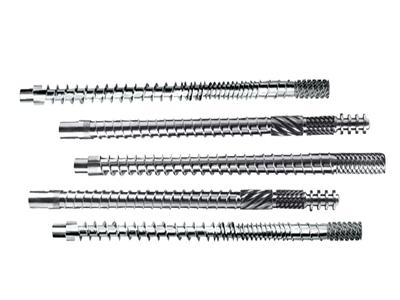The most significant problem associated with screw extruders is the rapid wear of the screw and barrel, especially in the case of WPC and formulations containing a high percentage of calcium filler. The wear of the screw barrel can cause many production problems and increase maintenance costs.
In order to extend the use time of the screw and barrel, we have been continuously researching solutions for decades.
The demand for screw extruders continues to increase
Recently, the requirements for extrusions have become more diverse and strict. Extrusion end users tend to use better and high-performance polymers and various additives to produce products with better transparency or gloss. At the same time, they require the extruder to have the characteristics of high output, low energy consumption, and low process waste. Sometimes recycled polymers are used in many applications. All these requirements for the final product and machine performance result in higher wear and corrosion of the screw barrel.
Signs of screw wear and undesirable consequences
When the screw barrel is worn, the gap between them widens, which increases the reflux of the melt polymer in the barrel. The melting temperature and polymer residence time will increase. In addition, productivity and plasticizing ability will deteriorate. How do we know that the screw and barrel are worn out. When you find that you need to increase the screw speed to achieve the same output. Degraded particles and some unmelted particles appeared. You will find that the polymer has come out of the vent.
Three wear conditions of screw and barrel
There are three types of screw and barrel wear; they are adhesive wear, abrasive wear and corrosive wear. Adhesive wear is the wear that occurs due to the metal-to-metal contact between the screw and the barrel when the screw is rotating. The reason may be the buckling of the screw due to back pressure, or the straightness and concentricity of the screw and barrel. As for abrasive wear, some additives are very corrosive to metal wear, such as CaCo3 and glass fiber. When the screw and barrel come into contact with corrosive polymers or additives, corrosive wear will occur.
Screw and barrel wear solution
One kind.
Choose the right steel for the screw and barrel
Before manufacturing, we quench the steel to the hardness of HRC28. The hardness of the finished nitriding screw barrel can be HV900~HV1000, and the depth is 0.5mm-0.7mm. This is the simplest and most economical application. We have strict quality control on the nitriding process to ensure the hardness and depth are correct.
B.
Deep nitriding treatment
Before manufacturing, we quench the steel to the hardness of HRC28. The hardness of the finished nitriding screw barrel can be HV900~HV1000, and the depth is 0.5mm-0.7mm. This is the simplest and most economical application. We have strict quality control on the nitriding process to ensure the hardness and depth are correct.
C.
Bimetallic screw barrel
However, the service life of the nitride screw barrel cannot satisfy many applications. Bimetallic screw and barrel are the best choice. According to the grade of bimetal parts, its wear resistance is 3 to 7 times higher than the nitride screw barrel. Bimetal screws have two kinds of metals and have a hard surface layer that resists abrasion and corrosion. The thickness of the hard surface layer can reach 1.5mm.



